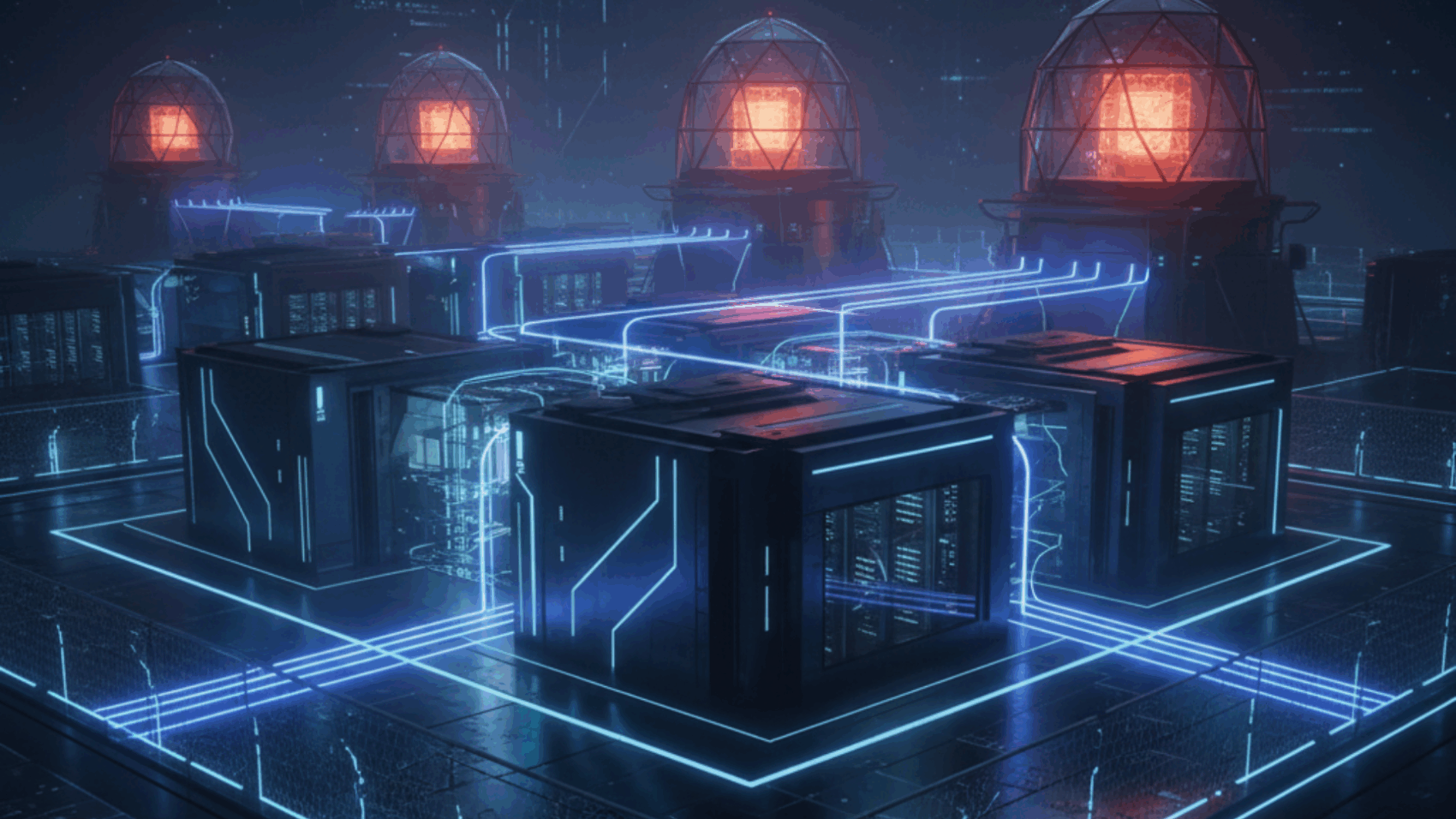Why the Next Wave of Data Centers May Be Fueled by Atoms
Introduction
As global cloud demand surges, the need for uninterrupted energy has never been more critical. Data centers — the invisible engines of our digital lives — consume staggering amounts of power. While renewables help, they can’t always guarantee consistent supply. Enter micro-nuclear reactors: compact, next-generation power sources that could make “always-on” infrastructure truly independent. The future of uptime might just be atomic.
The Growing Energy Problem of the Cloud
Every click, stream, and transaction passes through data centers — and those facilities require enormous, stable energy inputs. Today, hyperscale centers draw anywhere between 20 to 100 megawatts each, often enough to power entire cities.
Renewables like solar and wind are vital for sustainability, but their intermittency remains a challenge. Grid failures, price volatility, and supply chain disruptions have pushed operators to search for more controllable energy sources. Diesel backup systems are dirty and temporary; batteries offer minutes, not days, of power.
That’s why a radical idea is gaining momentum: bring a miniature nuclear reactor right to the data center site.
What Are Microreactors?
Microreactors are small, factory-built nuclear systems — typically generating between 1 and 20 megawatts of power. Unlike traditional nuclear plants that take a decade to build, these compact systems are modular, transportable, and designed for autonomous operation.
They run on advanced fuels such as high-assay low-enriched uranium (HALEU), enabling long refueling cycles — sometimes up to a decade. Their safety systems rely on passive cooling and fail-safe designs, drastically reducing the risk of overheating.
For data centers, this means:
- Independent, constant baseload power for 24/7 operations.
- Near-zero carbon emissions, aligning with sustainability goals.
- Reduced dependency on fragile regional grids.
In essence, microreactors promise the trifecta of uptime: reliability, autonomy, and sustainability.
The Energy Resilience Angle
Energy resilience isn’t just about having backup power — it’s about eliminating vulnerability. When a data center depends on the grid, it inherits every grid problem: brownouts, blackouts, and fluctuations from renewable input variability.
A nuclear microreactor changes that equation. It operates continuously, unaffected by weather or grid strain. For energy-hungry operations like AI model training or cryptocurrency mining, this provides unmatched stability.
Several pilot projects illustrate the shift:
- Oklo’s Aurora Microreactor aims to provide clean power to remote industrial and data facilities by 2026.
- Nuscale Power has developed modular reactors already under regulatory review for flexible deployment.
- Microsoft and OpenAI have both signaled interest in exploring small nuclear solutions for high-density compute clusters.
These developments mark the first real step toward energy-sovereign data centers — infrastructures that power themselves and stay immune to external disruptions.
Balancing Promise with Perception
Despite the appeal, nuclear still faces regulatory and public hurdles. Concerns over safety, waste, and proliferation persist — even for small reactors.
However, the new generation of microreactors is fundamentally different:
- They use minimal fuel and produce a fraction of the waste of older designs.
- They are often sealed units, designed for complete recovery and refueling at secure facilities.
- Built-in safety systems allow for autonomous shutdowns without human intervention.
Public education and transparent operation will be crucial for adoption. The idea of a nuclear-powered data center might raise eyebrows today — but so did the idea of offshore wind farms 20 years ago.
The Road Ahead
If nuclear-powered data centers succeed, they could reshape how we think about infrastructure geography. Facilities could be placed in remote regions, closer to users, without relying on overburdened grids.
It would also help stabilize national energy systems: during grid stress events, these reactors could feed surplus power back into the network, creating distributed resilience.
Governments are already taking notice. The U.S. Department of Energy, the U.K., and the EU are funding microreactor R&D as part of their clean energy transition plans. For the tech sector, this represents an opportunity to lead not just in computing, but in sustainable power innovation.
Conclusion
Micro-nuclear technology could be the biggest energy disruptor the digital world has ever seen. By combining continuous power with low emissions, data centers can finally achieve true energy independence. The next frontier of uptime won’t just be cloud-native — it will be atom-powered, merging the precision of digital systems with the enduring stability of nuclear energy.

